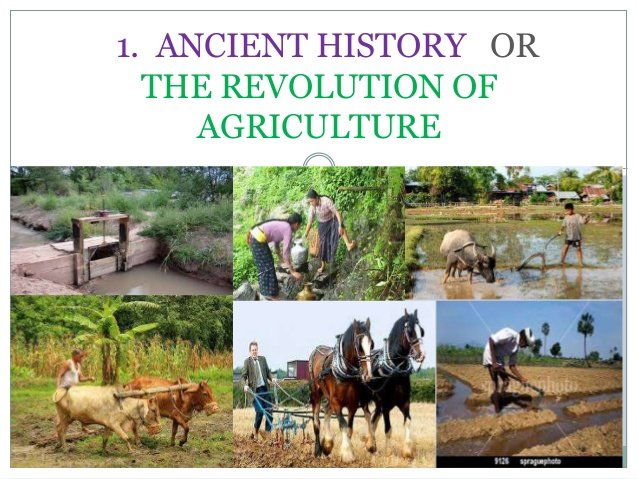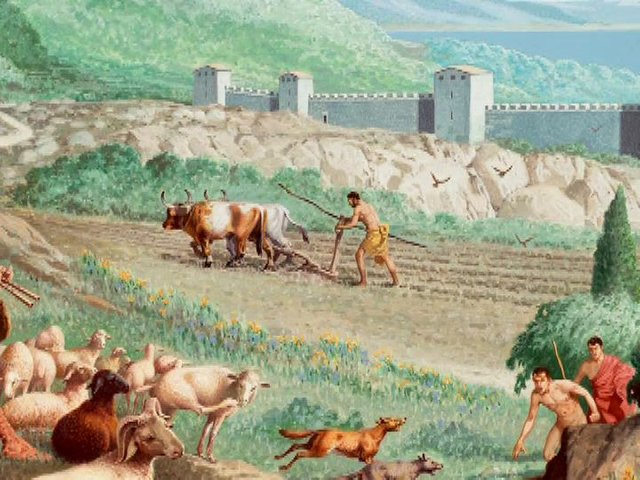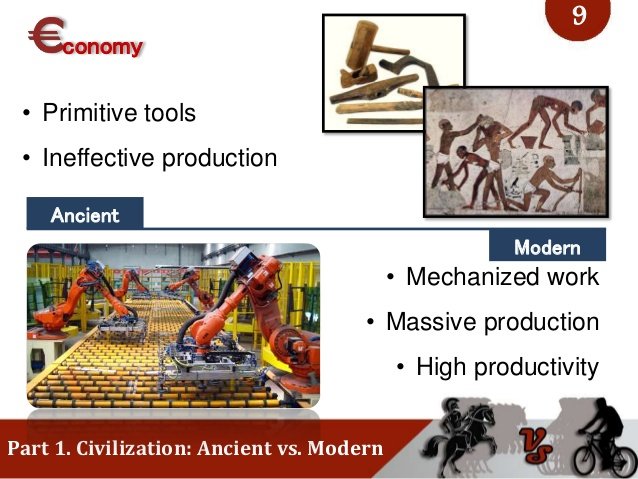Farms; History and Evolution of Agriculture
History of Agriculture
There are numerous alternatives for those wishing to think about an agribusiness based degree because of the idea of the expansiveness of the subject. With the investigation of present day ideas, for example, GM, natural change, manageability and in addition the business and logical sides, potential understudies are ruined for decision for work and degree choices. As a rule, a college degree ought to be sufficient to discover great business and understudies in the US taking a college degree have an unmistakable preferred standpoint over different nations because of the span of the business here. There remains a deficiency of agribusiness graduates as well, so it ought not be hard to discover beneficial business. For those going into agribusiness as a vocation, once you have picked this as a noteworthy it is savvy to pick such related subjects as science, nourishment, science and any natural alternatives your school or college may offer. With a college degree, you can oversee cultivates and farms, fisheries and woods, work with soil protection or numerous other "outside" choices.
For examine degrees, for instance those identified with the earth, hereditary qualities and specific reproducing, horticultural building and innovation, a propelled degree is a conceivable necessity - regularly a MS in the event that you need to center around lab work as opposed to handle work.
Agribusiness is characterized as the development and abuse of creatures, plants (counting parasites) and different types of natural life for human utilize including sustenance, fiber, medications, fuel and whatever else. It is, and has been since there was an agrarian market, one of the biggest bosses of individuals; in the USA today, agribusiness speaks to 20% of the US economy.
- Before sorted out horticulture, it is trusted that the nourishment supply could accommodate only 4 million individuals all inclusive.
Indeed, even as innovation changes, horticulture adjusts and would never end up out of date - even in a period when it may possibly be tremendously not quite the same as what it may have been at the beginning of farming. All things considered, we are continually going to need to build the quantity of products we develop for sustenance and for garments, colors and oils, seed advancement and designing to adapt to the developing needs of the total populace, regardless of whether the photo isn't as hopeless as the most traditionalist concerns may recommend.
- Today, horticulture is as much a science as a workmanship. With a need to adapt to the developing needs of the planet's populace, and to discover approaches to continue creating nourishment and different yields as we venture into minor scenes, and adjust to an evolving atmosphere, changes in farming practices, sustenance innovation and bio innovation will keep on being a major piece of human progress.
The History of Agriculture
- Prehistory
For a large portion of our reality, people were seeker gatherers. This implies individuals carried on with an itinerant way of life, moving with the seasons to take after the nourishment supply. As the ice sheets withdrew and vegetation examples and development territories changed accordingly, it implied that the need to move so frequently turned out to be marginally less fundamental - however without a doubt the way of life carried on for a huge number of years as individuals looked to augment their asset securing. Seeker gatherer social orders would have known which crops were best to misuse with each season.
The "seeker gatherer" moniker can be a misnomer as it is trusted today that traveling groups didn't all of a sudden simply choose one day to quit moving and to set up perpetual settlements - however the purposes behind the change have been investigated in incredible arrangement is as yet not settled. It is likely that some level of semi-roaming way of life created where individuals essentially set up camps for quite a long while at once, cordoning off regions of wild yields that had the most rich assets. It is likewise likely that they had crowds of domesticated animals that they took with them wherever they moved, keeping them secure to abuse for drain, meat, hide and different assets. The need to ensure stores of sustenance for the following season may likewise have had an impact.
Archeologists and scientistss have followed the starting points of cultivating to around 10,000 years prior, to some place in the Indus Valley, and perhaps as a different advancement in China along the Yangtze River.
- It is realized that people initially tamed yields and later animals in sufficiently incredible numbers to perceive the indications of consider abuse
Early Civilization
Early progress can be viewed as a blast time in agrarian science and innovation. Around 5500 BC, the Sumerian progress of the Middle East and other early pre Greco-Roman civic establishments comprehended the requirement for a particular horticultural workforce for their social orders to flourish. It is in this period that we saw the innovation of water system in addition to other things, and this specific workforce, and spotlight on rural innovation permitted the improvement of the main urban areas. Thusly, these drove the main composed laws and prompted the improvement of complex social orders. Starting here of view, agribusiness drives civilisation: including religious practices, social states of mind and lawful codes.
Antiquated Egypt had a standout amongst the most complex social orders of the old world before the ascent of the Greek development, and it was for the most part on account of their horticultural framework. The River Nile depended intensely on the seasons and every year, the waterway would surge its banks and part of the encompassing farmland (called The Inundation). Their progress and to be sure their religious structure, was worked around the nurturing idea of the River Nile and the kingdom's substantial dependence on the stream and delta framework. The vast majority of Egypt was and still is desert with a couple of key desert gardens, which implies that the farming fixated on a little piece of the nation.
The Greeks and Romans took quite a bit of their horticultural innovation from different civic establishments with which they had contact - most prominently those of the old Near East, for example, Mesopotamia, by means of Sumeria. From Egypt, those social orders took coordinate impact once the nation was vanquished by Alexander the Great and later by the Roman Republic. It was here at the introduction of present day progress that we saw genuine expansive scale creature and plant agribusiness.
- Technology might not have propelled an extraordinary arrangement, but rather the procedures made agribusiness sufficiently proficient to manage the realm's vast urban communities, making it a fundamental industry.
#Early to Modern Civilization
The Middle East kept on observing much development in the farming enterprises, something that students of history allude to as The Arab Agricultural Revolution. This was on account of the decent variety of the neighborhood geographies, the harvests developed in the Middle East and Indus Valley that European social orders pined for, and later went about as an exchange connect between Far East and Europe.
In Europe, minimal changed before the ascent of the kingdoms around the eleventh century when the Church wound up real landholders and merchants, pioneers, teachers and held both transient and profound forces. The frameworks prompted through feudalism, regardless of whether mainstream rulers or church possessions, looked to enhance yields with the developing populace, and normally we saw huge innovative advances in this period as well. It was a time of enormous specific cross-reproducing, especially in creature domesticated animals, and frameworks of association. In a few zones of Europe, we can see the leftovers of the agrarian framework today as medieval edge and wrinkle strip cultivating. It is on account of the religious communities of Europe that we see progresses into what we call "minimal scenes". Regions where crops don't develop in awesome numbers the we see horticultural designing on an exceptional scale. Floodplains were depleted, wild forests changed over to fields and bracken cleared for field, territories with low fruitfulness were changed over or modified to make legitimate utilization of them; for instance, grain develops well on salty soil, making it perfect to develop on floodplains. Present day rural practices saw its last current improvement in the sixteenth century when agriculturists thought of product turn - the possibility that one could expand yields by exchanging land use around consistently all together not to deplete the dirt. One year the field would have crops planted, the next year it would be utilized for animals and the third it would be kept neglected. Despite the fact that prior social orders had utilized it to a specific degree, just in the sixteenth century was the strategy consummated.
The Americas
Mass farming practices were not especially exhibit in North America until the entry of the European homesteaders. It's surely not genuine that the Native Americans had no farming; in reality, there is prove for some restricted rural practices however it was not all inclusive over the clans. Some were totally migrant and some were generally static - these were not land either, a few clans in the east had totally trained yields. When we take a gander at the south-western states, especially Arizona and New Mexico, we see farming on a mechanical scale - particularly the development of maize trims that were presented from current Mexico, whatever remains of Mesoamerica and past. It is likely that agribusiness went toward the North America moderately late, maybe in the vicinity of 2500 and 2000 BC and we see it broadly with so much human advancements as the Hohokam, the Anasazi and antiquated Pueblos, potentially creating in Mesoamerica around 6000 BC with the training of maize.
In Mesoamerica and South America, with the Inca, the Maya, Olmecs and the Aztecs, generally early advancement of horticulture allowed the working of gigantic urban areas that awed the European colonizers; it was immediately recognized that these human advancements had a great farming construct economy that remained in light of a standard with Europe, testing what was then comprehended about the improvement of progress. In Mesoamerica it was corn and in South America it was the modest potato. Today the staple product of a great many people in the western world, alongside coca and the training of creature species, for example, llama and alpaca.
Modern Farming
Present day cultivating started around the eighteenth century in what is for the most part alluded to as "The British Agricultural Revolution" when a few advances and changes were made to cultivating in a short space of time that saw gigantic increments in yield and a more effective process. The three field trim pivot framework was supplanted with a four field framework and clearing fenced in area acts controlled land administration, particular cross-reproducing started on a mechanical scale to expand edit estimate and also yields making a few cultivars simultaneously. Creature farming additionally enhanced, prompting a more prominent surplus than had been reasonable under the old framework. It is said that these progressions allowed the mechanical transformation and much more noteworthy centralization of urban advancement, energizing the realm. In what way? More products for less laborers, better strategies for keeping and supplanting supplements in the dirt implied that more individuals could work in industry. At the point when the Corn Laws in England were revoked, it started the worldwide nourishment economy; about a similar time, Charles Darwin's Theory of Evolution put farming on the cutting edge way of a science as we comprehended the advancement of harvests.
The following changes would not be until the War Years when the military forces created (and required with apportioning) serious cultivating; it has been a divine being send, and since 1970, worldwide grain generation has quadrupled. New plastics and in addition the advancement of nitrates. permitted considerably more prominent yields yet again and it has through this framework, now set up for right around a century, enabled more prominent access to sustenance substantially more economically. However for a few, nature has paid a value that some agrarian researchers have attempted to address.




